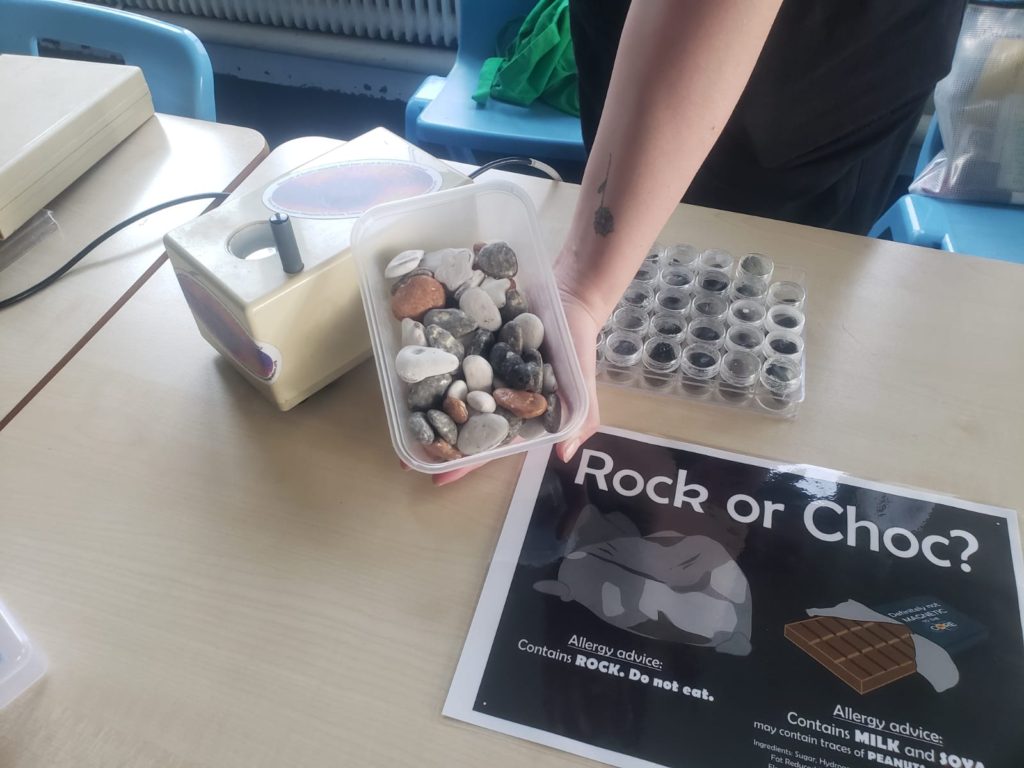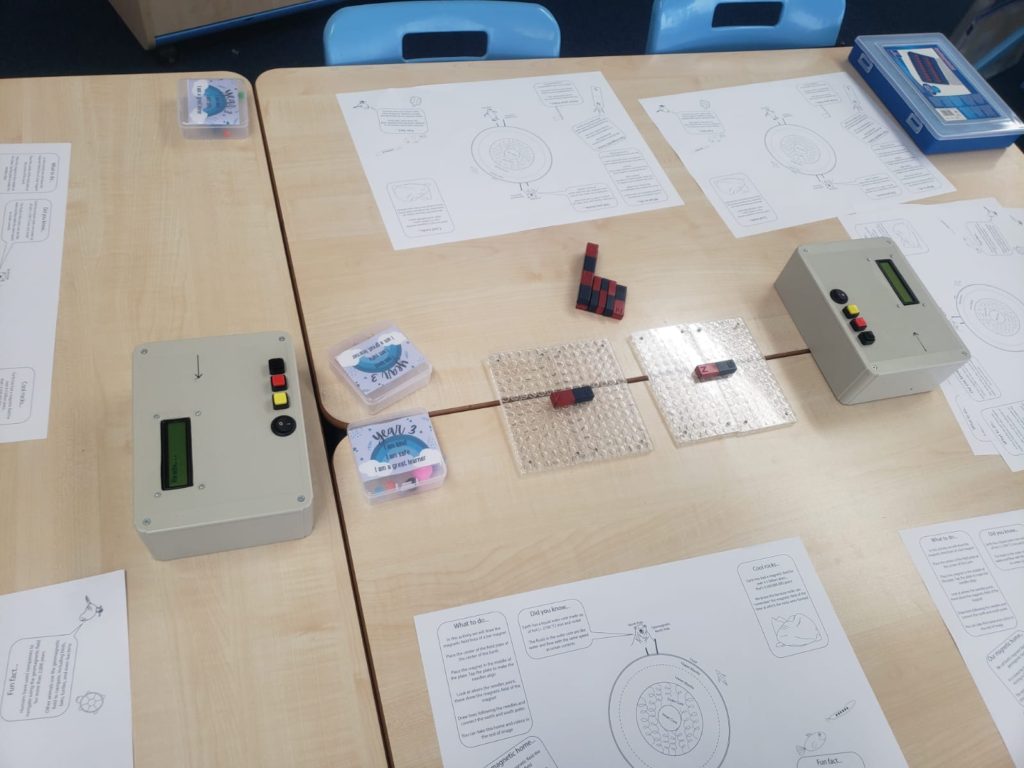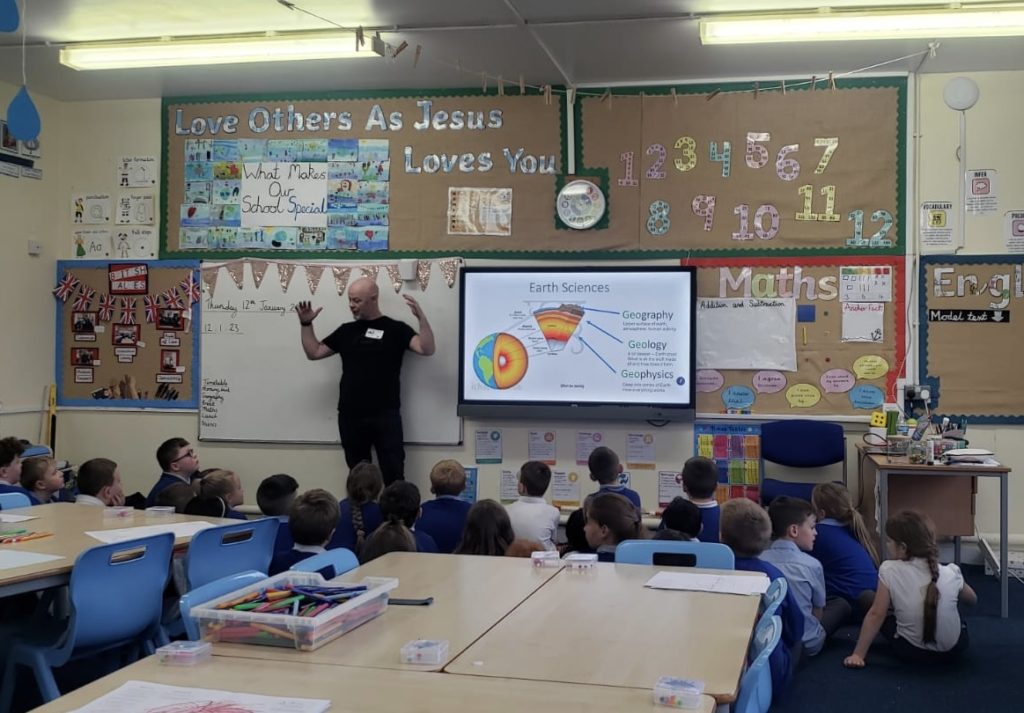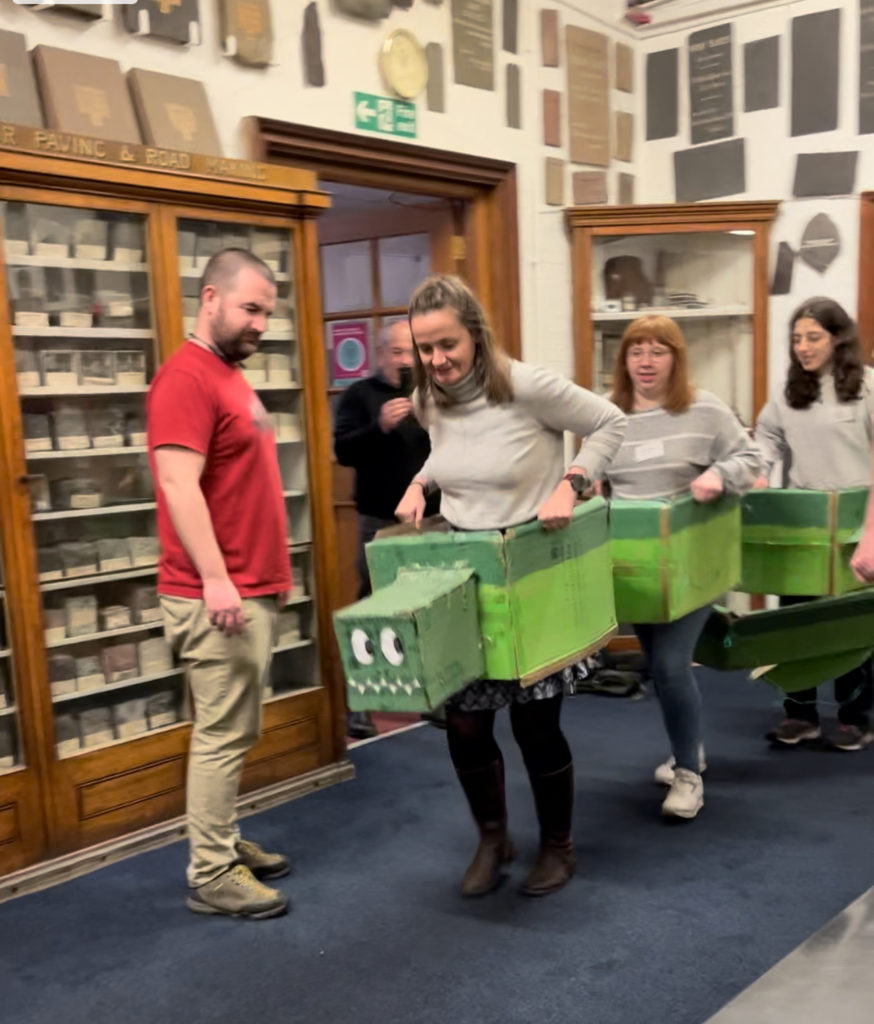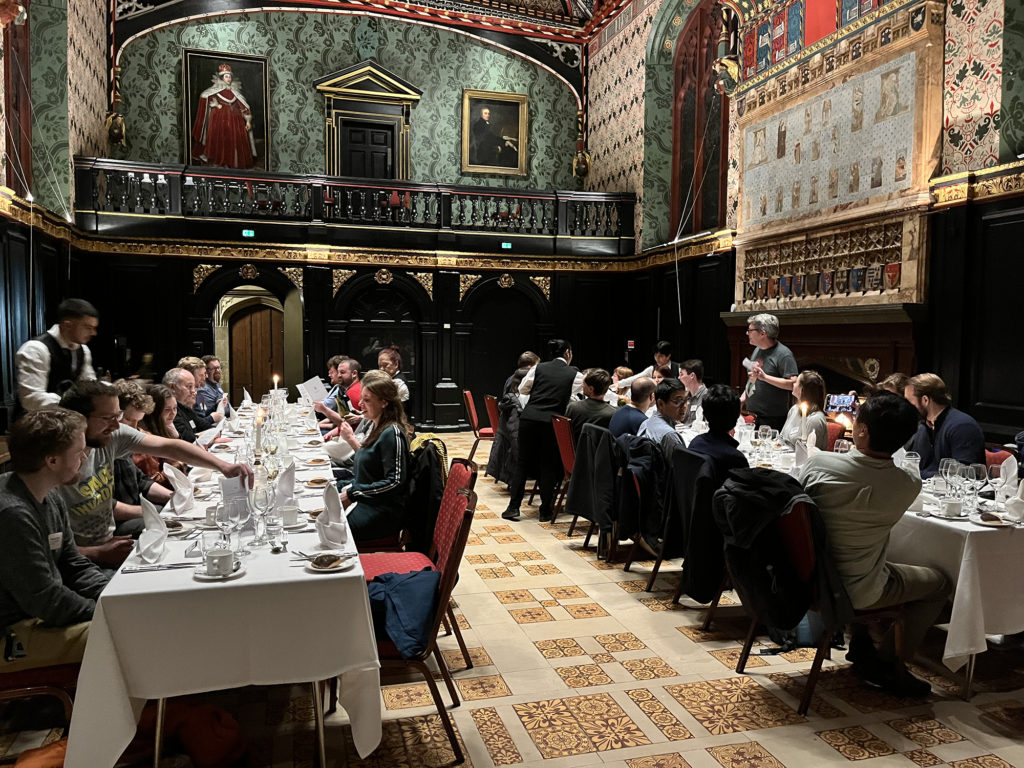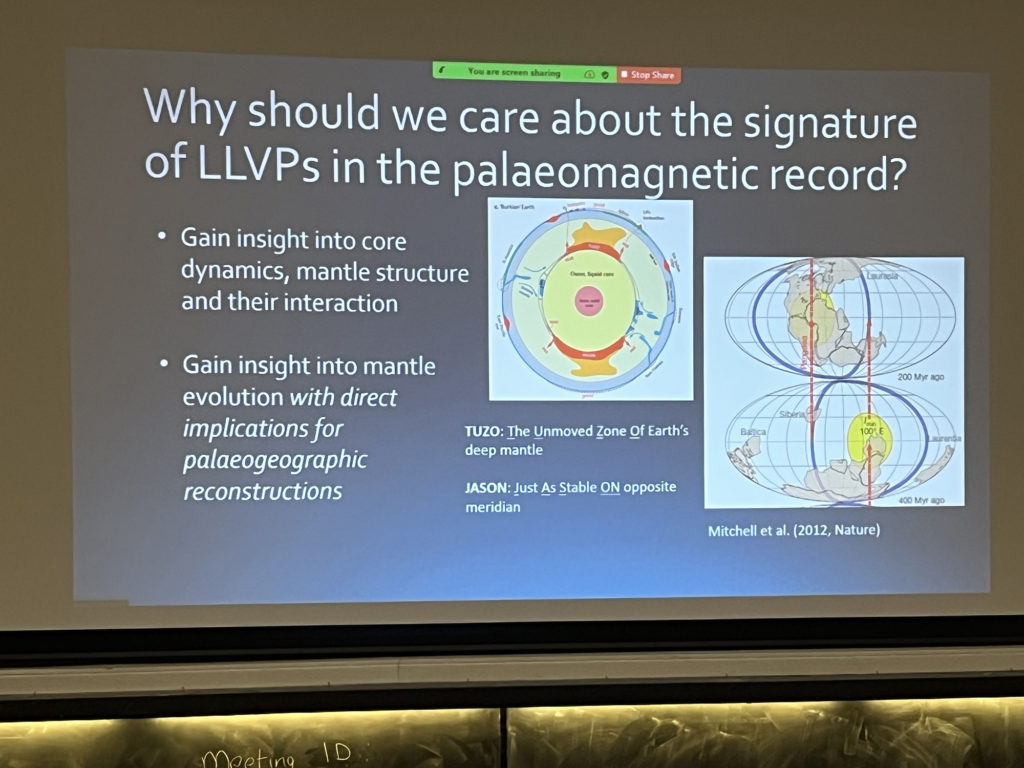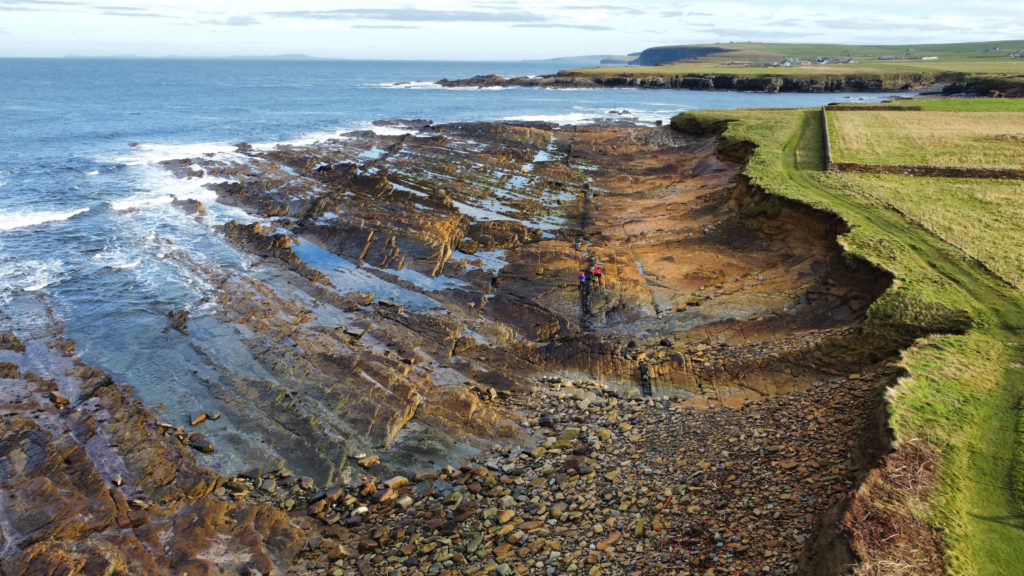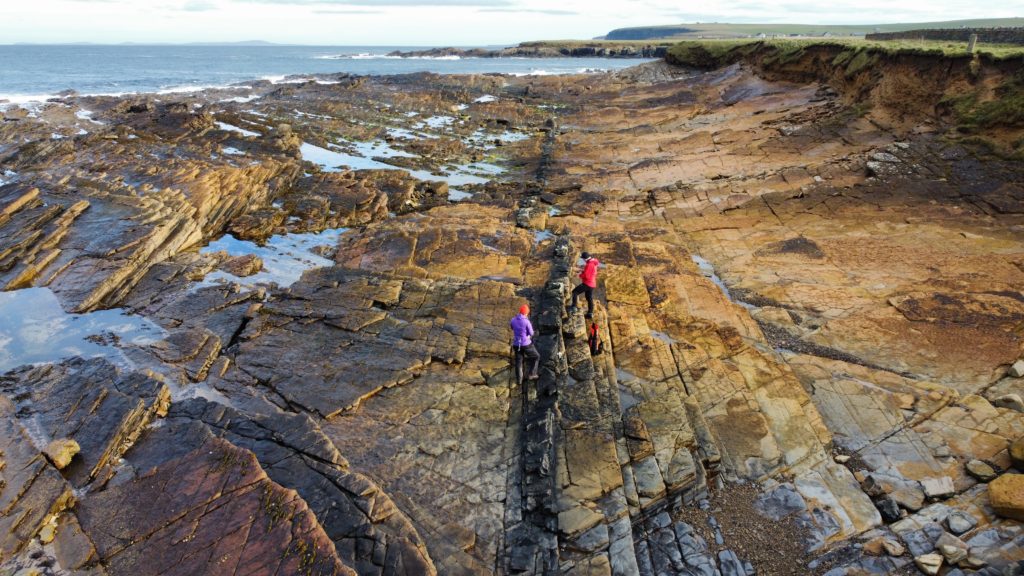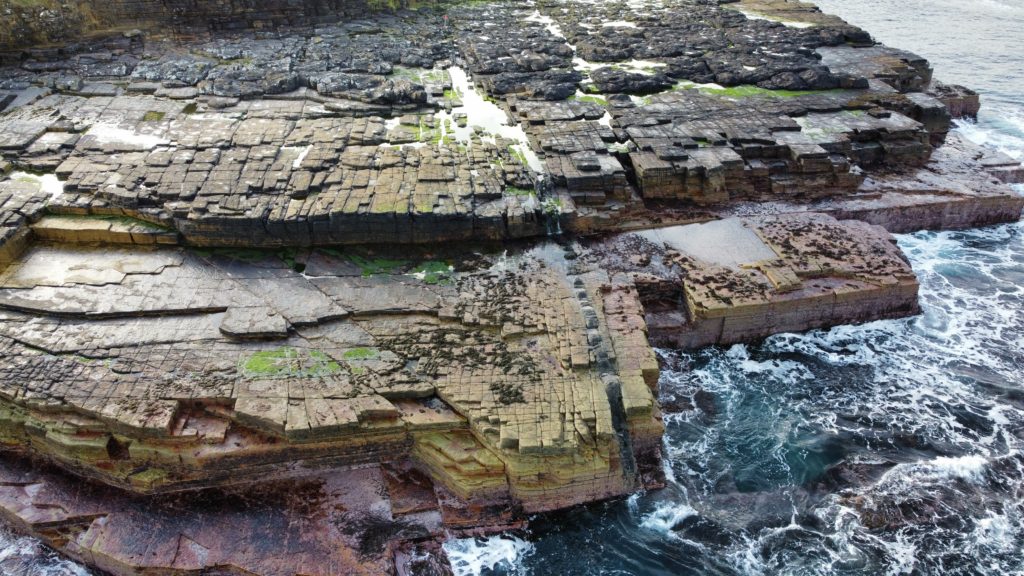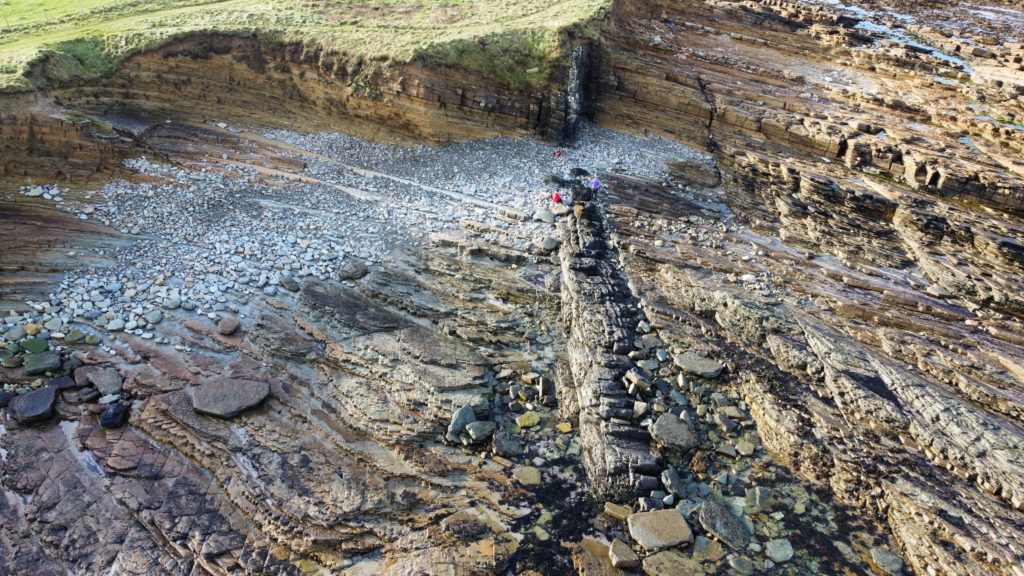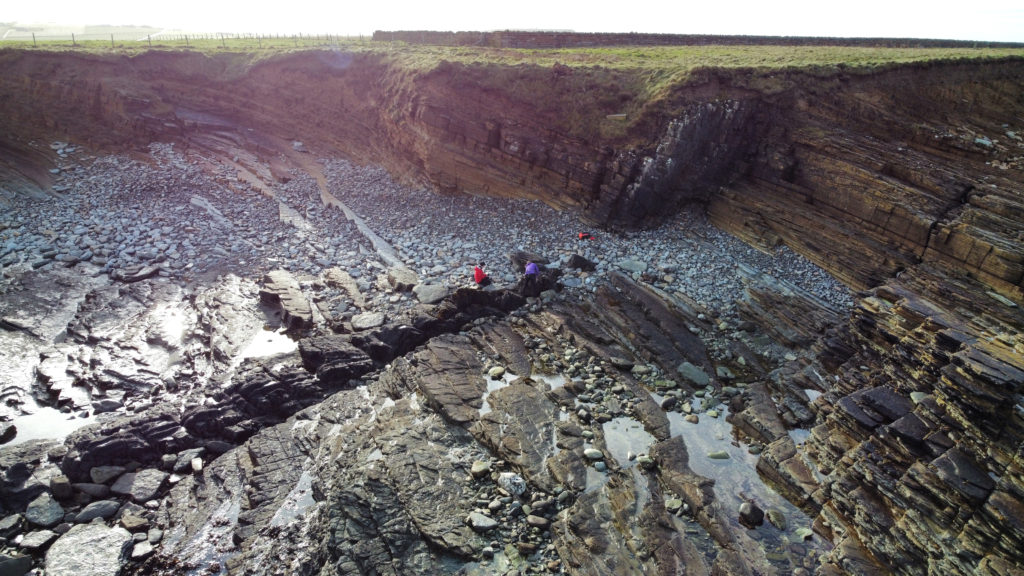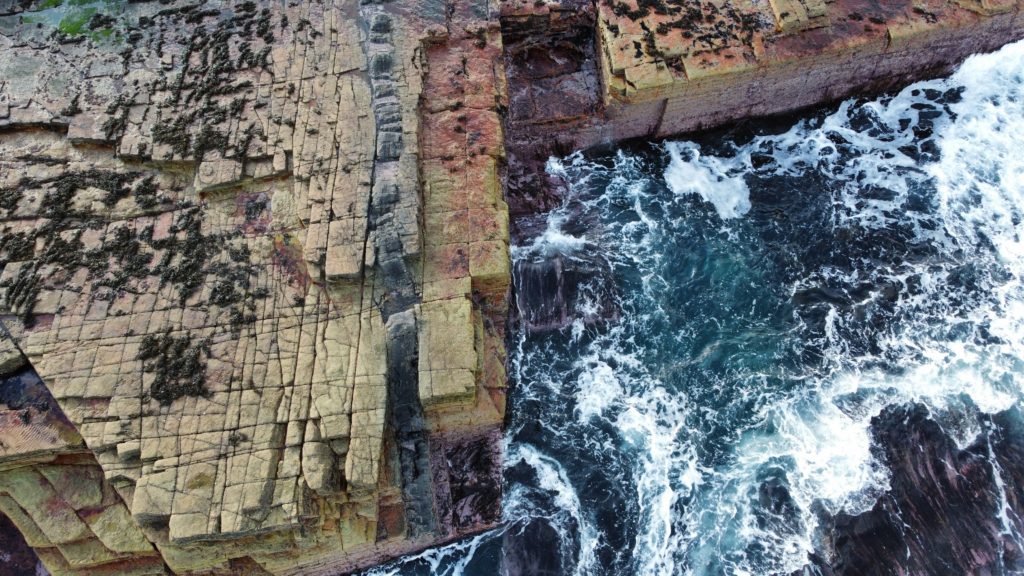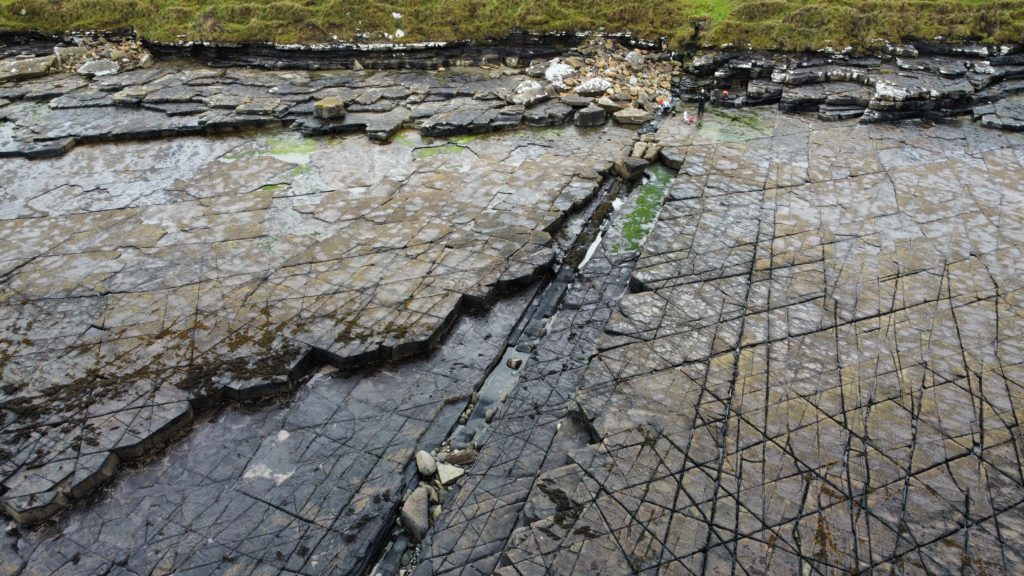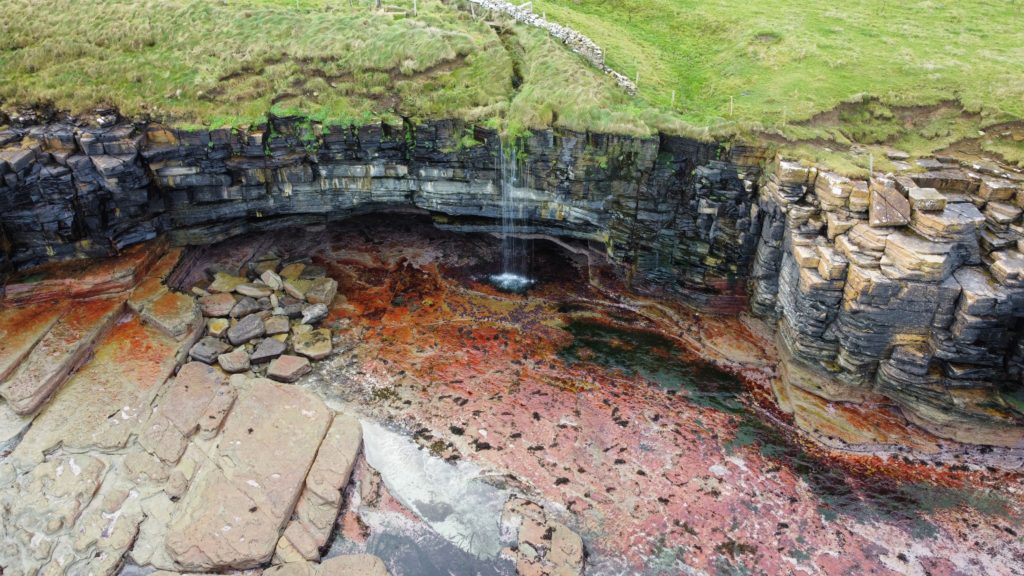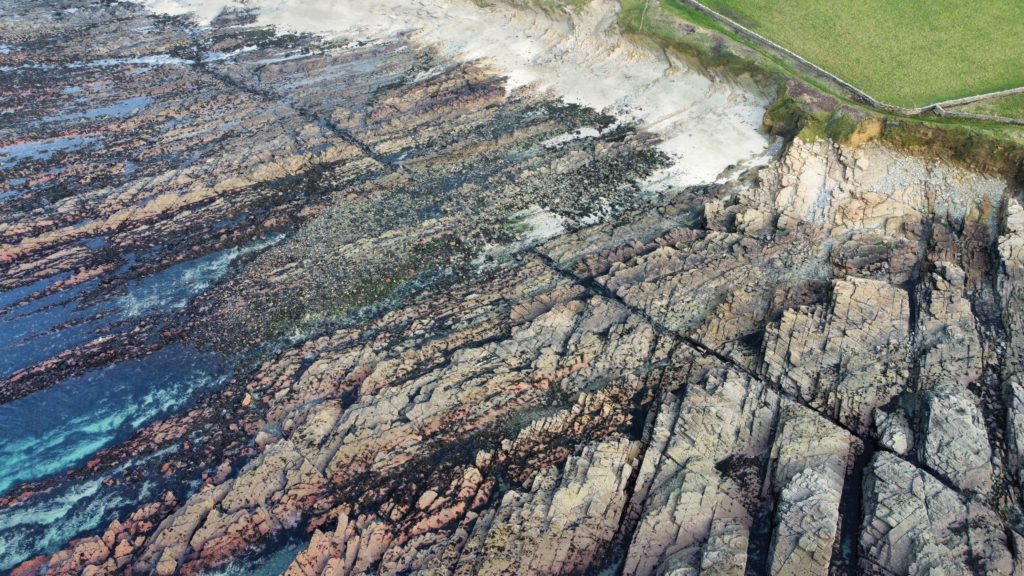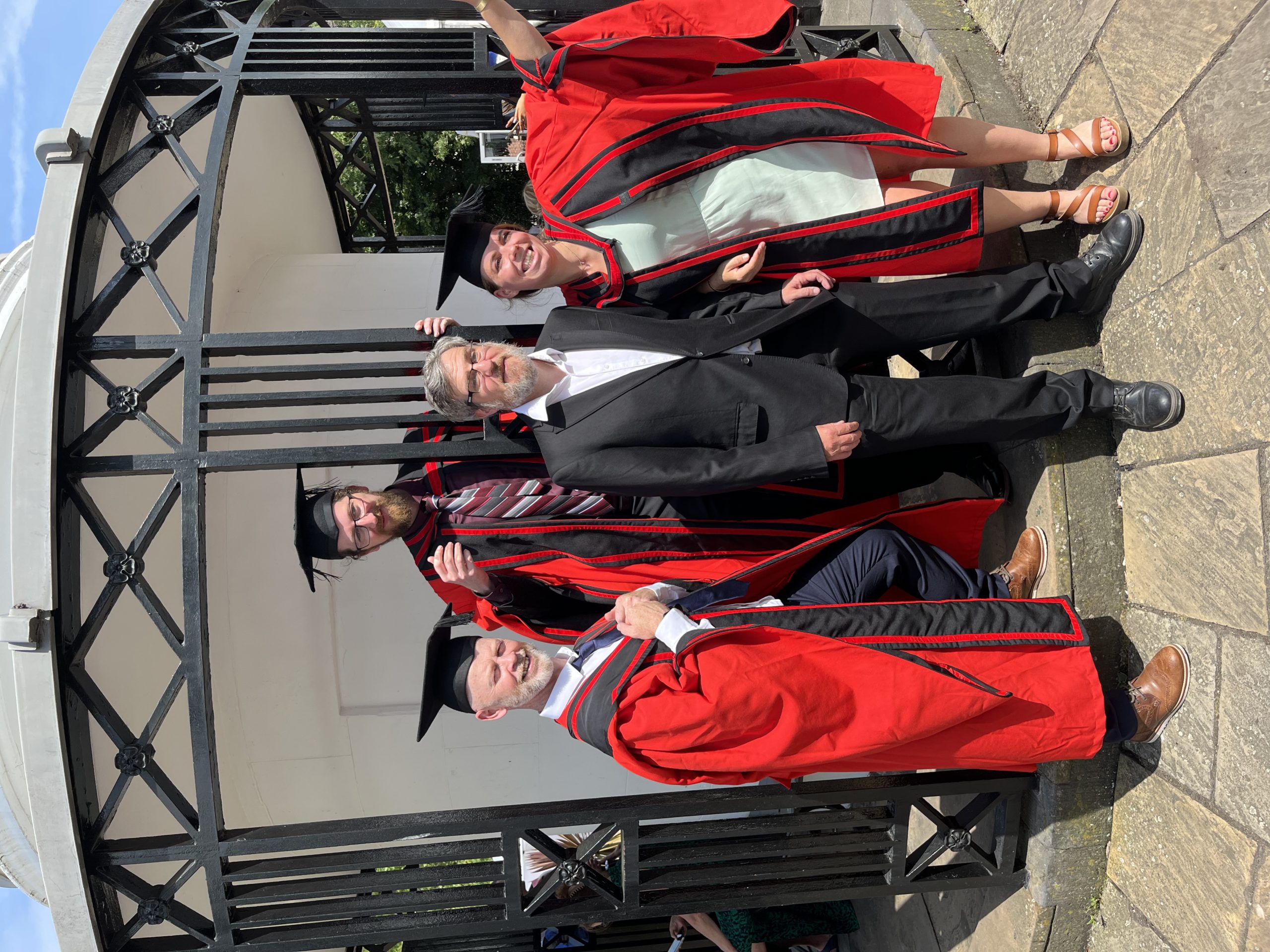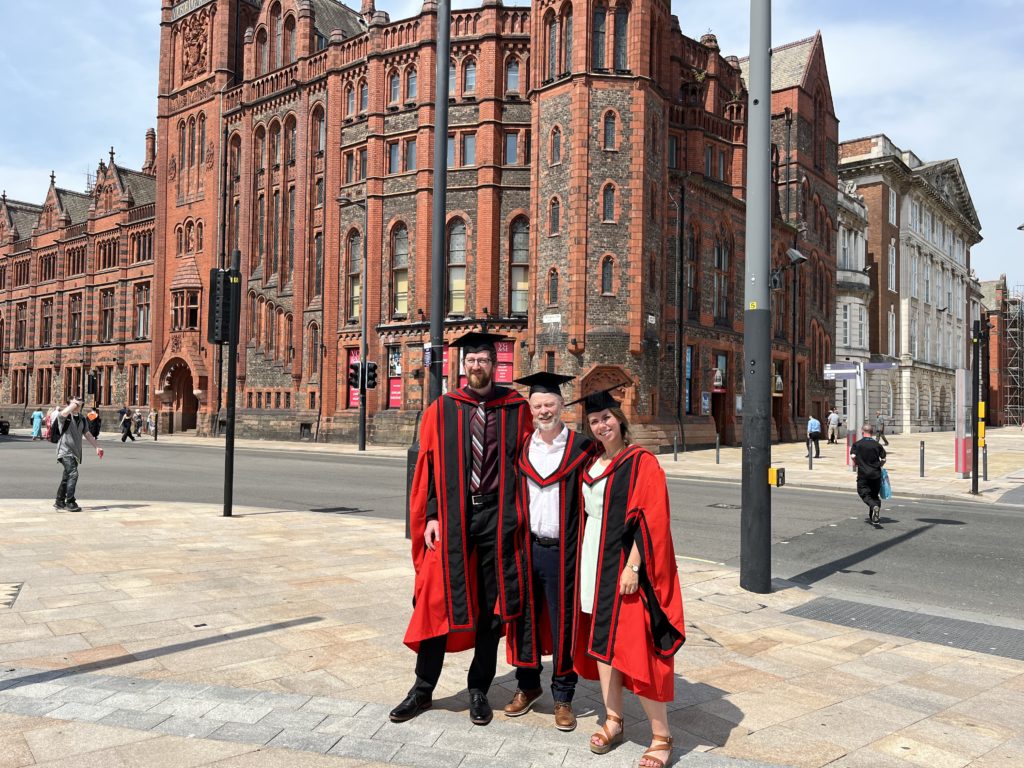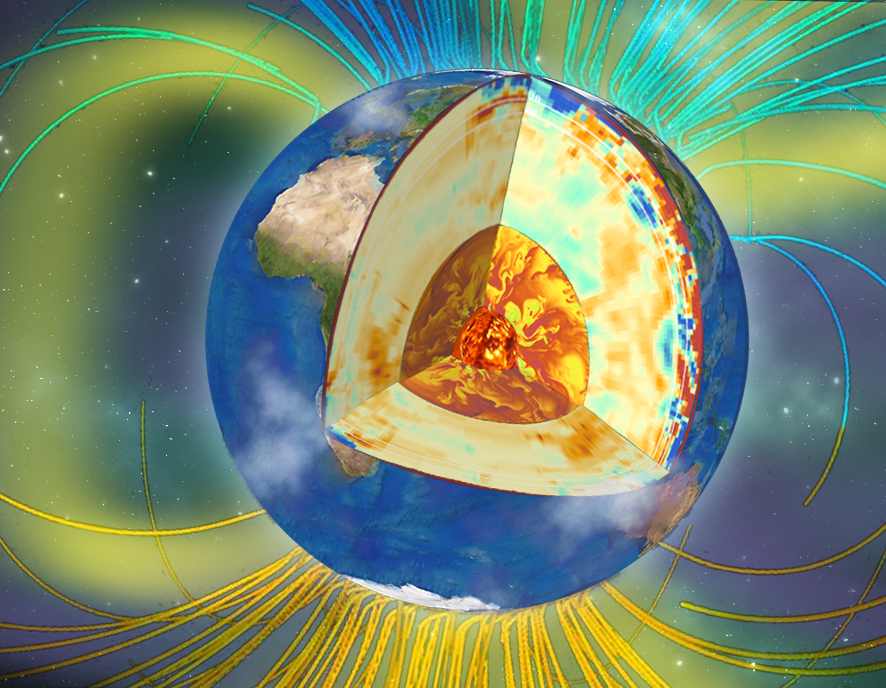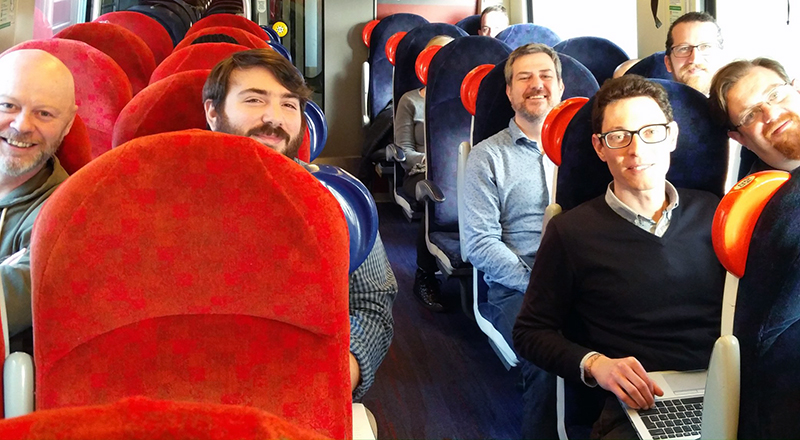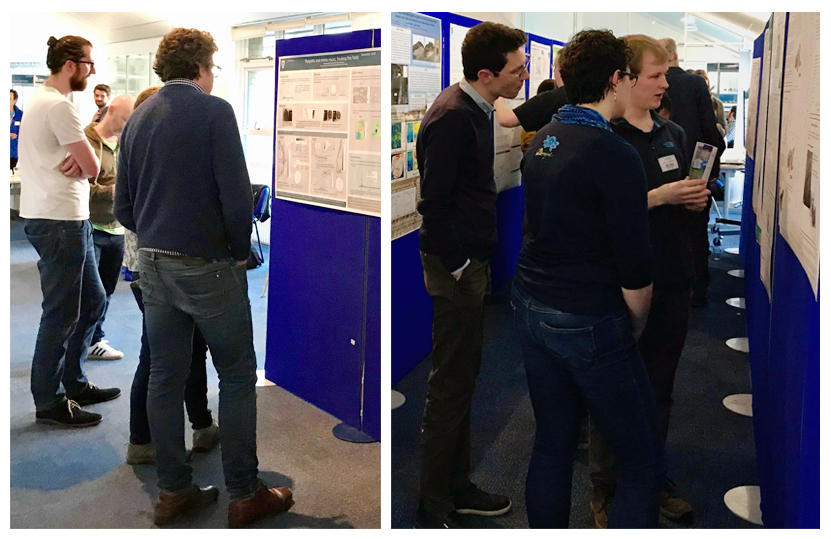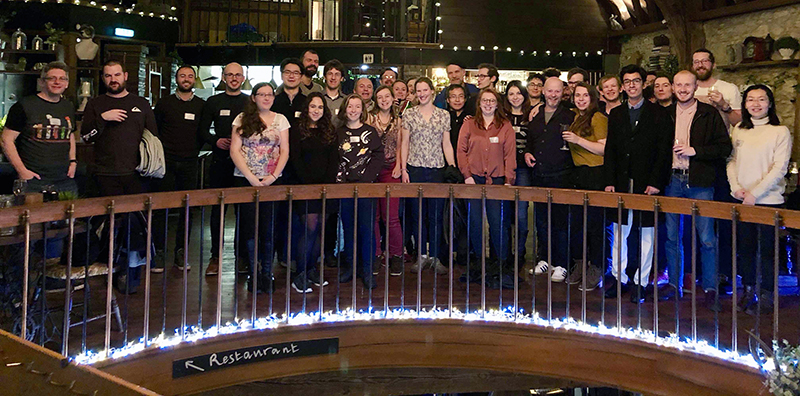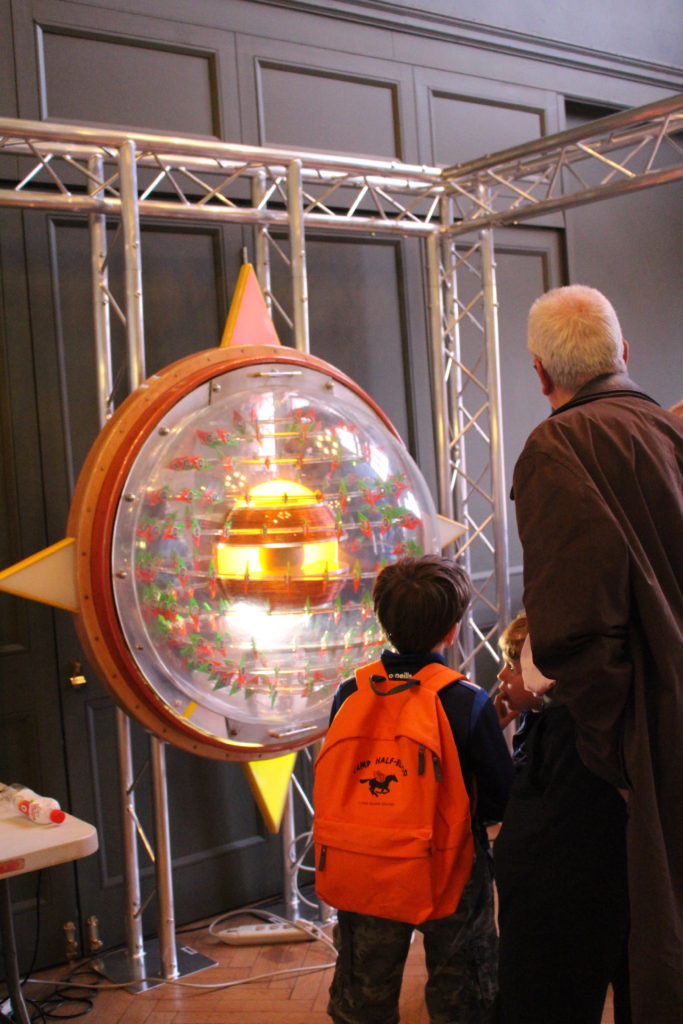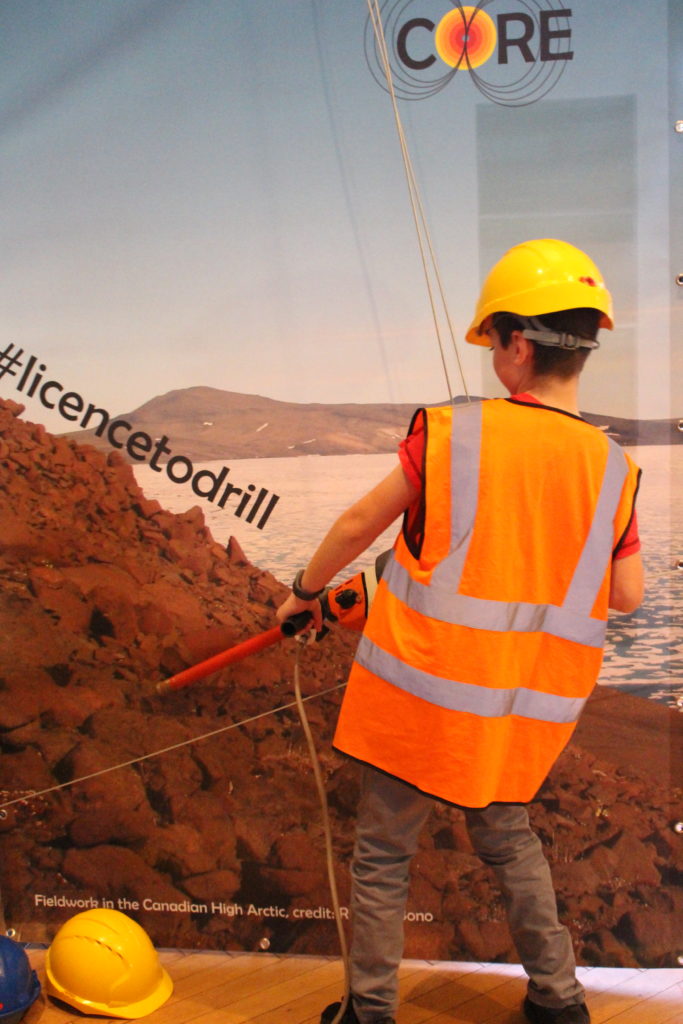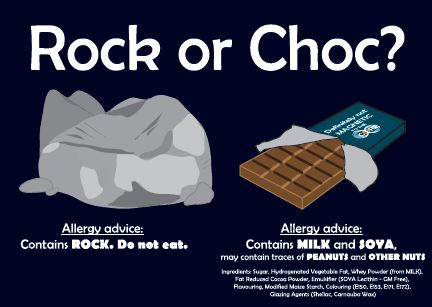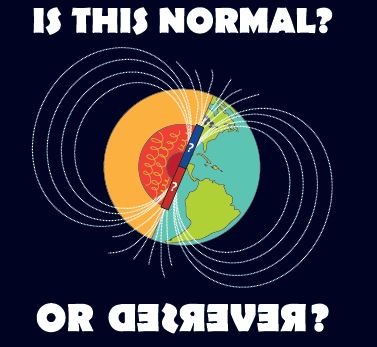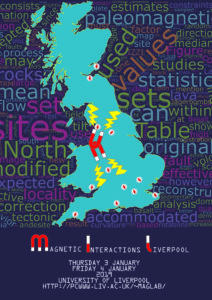We were recently asked to give a talk for science day at St Michaels & All Angels Primary school on the Wirral. So, armed with all our gadgets and activities and a fun presentation, a team of four rose to the task. We ran two sessions, one each for year 3 and year 4 (the children were 8 – 9 years old) which consisted of a 10 minute talk followed by two activities running simultaneously. During the talk the children’s engagement and interest was clear; everyone hand was up at some point to either ask a question or provide a little story that they realised was in some way related.
One activity saw the children drawing Earth’s magnetic field lines and play with bar magnets to reproduce the field with rotating metal strips; they then got to explore the effect of the bar magnets on portable magnetometer measurements. They learned how the direction of the bar magnet changed the reading’s polarity and how the distance from the sensor affected the strength of the signal.
The other activity was ‘Rock or Choc’ which is always well received; here we use magnetic susceptibility meters to measure chocolates that look identical to pebbles and real pebbles. The kids have fun trying to work out the difference first. Everyone had a turn and received a chocolate pebble prize. A brilliant and rewarding afternoon some very clever future scientists.

